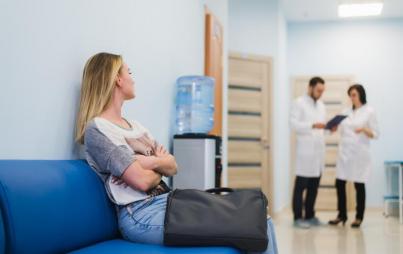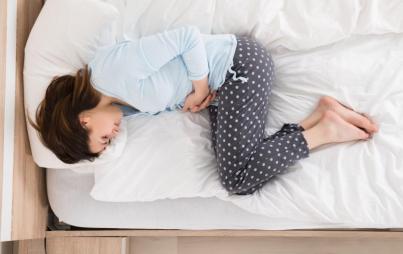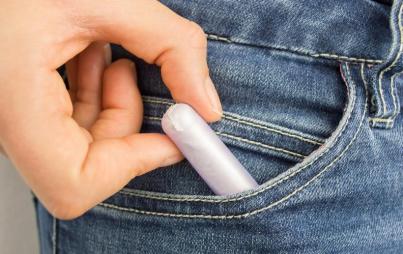
Would YOU take the little pink pill?
The FDA recently approved Flibanserin, also known as Female Viagra.
This is the first-ever FDA drug to treat low libido in women, officially called Hypoactive Sexual Desire Disorder (HSDD). Flibanserin has a checkered past and provokes intense debate around equality, sexism, female sexual response and “Big Pharma.”
Like Viagra did for Pfizer when it was FDA-approved in March 1998, this drug could quickly generate billions of dollars for North Carolina-based Sprout Pharmaceuticals. It's also a possible game-changer for millions of women genuinely longing to get back in the sexual game.
So why is this drug so controversial? Here’s what you need to know.
Interesting Facts
- Unlike Viagra, which is a vasodilator (increases blood flow), Flibanserin works directly in the brain to increase dopamine and norepinephrine and decrease serotonin.
- Unlike Viagra, which one takes just prior to sex, you must take Flibanserin daily at bedtime at a recommended dose of 100 milligrams.
- The proposed trade name is Addyi.
- Flibanserin was originally studied in men and women to treat major depression. It failed to demonstrate efficacy for depression; however, some subjects reported increase in sex drive.
This Is Not Flibanserin’s First Rodeo
The FDA rejected Flibanserin twice already (once in 2010 and again in 2013) due to negative side effects and only modest efficacy. These rejections outraged many women, citing sexism as the source. Many ladies felt “gypped” by the medical and pharmaceutical industries because virtually all sexual enhancement drugs were for men, suggesting that female sexual health and satisfaction was less important.
Many see the approval of Flibanserin as progress toward acknowledging that female sexuality is just as important as male sexuality.
It's Finally Women’s "Turn" To Enjoy Sex And Reclaim Their Sensuality
Men have more than 20 options when it comes to achieving and maintaining erections, and women demanded that the medical and pharmaceutical industries finally address their needs.
After the second rejection of Flibanserin in 2013, the FDA stuck to its guns and stated that they based their lack of approval strictly on risk-benefit analysis and had nothing to do with sexism or gender bias. The FDA further identified female sexual dysfunction as one of its top 20 areas of “high priority” and “focused attention.” Some women, who identify themselves as feminists, applauded the FDA for not buckling to the pressure of Big Pharma and maintaining safety as priority number one.
The Tides Are Changing
On June 4, 2015, an FDA-appointed advisory committee recommended approval of the drug in its 308 page report, and the FDA made its controversial final decision to approve Flibanserin on August 18, 2015.
The side effects and modest clinical success have not dampened excitement about the impending approval. A recent survey conducted by Treato.com of 700 users revealed that 80 percent of female survey participants are willing to take a daily pill to improve low sex drive. No doubt, droves of women will line up at the drug store with script in hand now that the FDA approved the drug.
Don’t Pathologize Me!
Although many women feel it’s about time the historically male-dominated pharmaceutical industry woke up and smelled the sexual needs of women, not all women are celebrating Flibanserin's approval.
Opponents of the drug see it as a classic ploy to first create a problem, then sell a solution, thereby convincing women they're “sick” if they do not maintain an external (typically male) standard of sexual interest.
Dr. Adriane Fugh-Berman, Director of Georgetown University’s Medical Center’s research project “PharmedOut”, is one opponent of the drug who believes women are being unduly pathologized by the sexual medicine industry. She appropriately reminds us that sexual desire naturally fluctuates throughout life and says it's inaccurate (and damaging) to call that a “disease”. She and many others believe the hard push for approval puts profit above safety and perpetuates the damaging rhetoric that “medicalizes” sexual function.
In a compelling article published in The Washington Post (just after the FDA advisory committee recommended to approve Flibanserin on June 4th), Cindy Pearson, executive director of the National Women’s Health Network, wrote that “women get hurt when companies exaggerate [medical] conditions to promote use of their drugs.” She believes that the side effect profile and marginal clinical success is grounds for another rejection.
However, the FDA typically follows the recommendations of its advisory committees. Forbes Magazine reported that between 2007 and 2010 (on a total of 120 votes) the FDA followed the committees’ advice 74 percent of the time. I guess the third time really is the charm for Flibanserin.
It’s Not A Cure-All Treatment
When Viagra was FDA-approved to treat Erectile Dysfunction in 1998, my colleagues and I worried that our role as sex therapists was becoming obsolete. If men could count on rock-hard erections, why would they need our help?
But here's the thing: good erections don’t fix bad relationships.
Even though Viagra works 65 to 80 percent of the time, the discontinuance rate is as high as 50 percent in some studies. That’s because if you ignore the psycho-emotional dynamics of sex, medically-induced erections will only go so far. And for women, non-sexual dynamics play an even bigger role in their sexual desire.
If you and your partner are good friends and have abundant positive regard toward each other, maybe Flibanserin is just what you're looking for — a neurochemical boost of dopamine to get the juices flowing. But, if you harbor resentment, that dopamine boost may not translate directly to your partner. Maybe you'll have more sexual dreams, dust off your vibrator or begin flirting with your sexy cubicle mate.
And even if it works (which is iffy given that reports of efficacy range from only 10 to 50 percent) the side effects are intolerable for some. The potential side effects include sedation, dizziness, nausea, fatigue, insomnia, dry mouth, anxiety, serotonin syndrome, low blood pressure and abnormal bleeding from the uterus. Alcohol consumption significantly increases risk of certain side effects. According to an article by Mara Schiavocampo and colleagues from ABC News, 15 percent of women in the clinical trials dropped out solely due to side effects.
Final Thoughts
I’ve been treating women with low (or altogether absent) sex drive for 23 years. The impact of this on their sexual self esteem, sense of femininity, and overall well-being is considerable. The havoc that low libido wreaks on relationships is profound, leading to chronic tension, infidelity and divorce. Every woman deserves positive sexual experiences.
Is Flibanserin the answer? Is this little pink pill progress, propaganda or profit? I can argue for each side. You’ll have to decide for yourself.
For more information on male and female sexual health, please visit kimberlyresnickanderson.com.
This article originally appeared at Your Tango.
Also from Your Tango:
Helpful Hints To Heat Things Up In The Bedroom
Perk Up! 13 Reasons To Love Your Small Boobs
Truth Bomb — Your Porn Habit Is A MUCH Bigger Problem Thank You Realize








